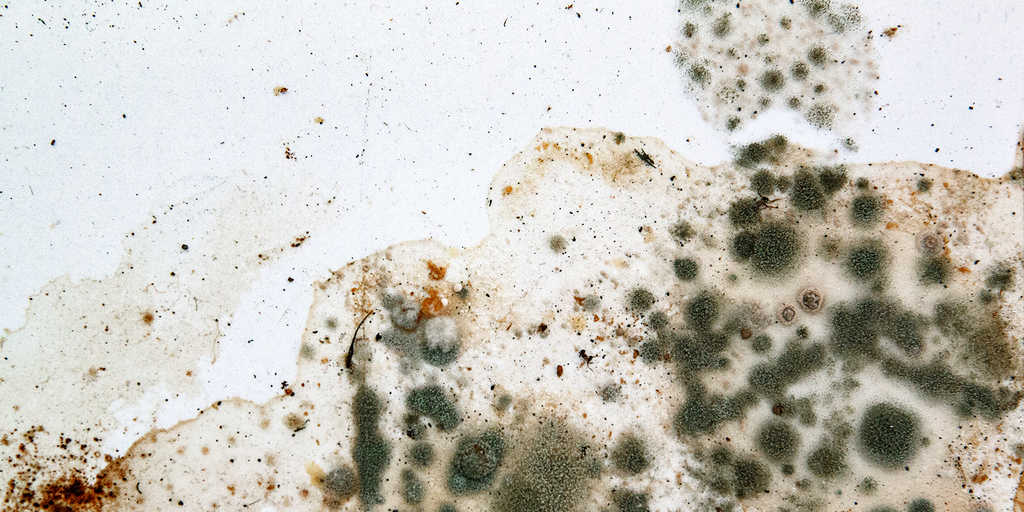The air is full of particles that can cause negative health effects including asthma, allergies, illness, and even cancer. This article will cover the sources and health risks of the most common air pollutants.
Dust:

Atmospheric dust consists of a mixture of solid and liquid particulate matter from different sources. Some of these particles are so small they can be inhaled and cause serious health problems. Particles less than 10 microns in diameter (PM10) can get deep into your lungs and may even get into your bloodstream. Particles less than 2.5 microns, also known as fine particles or PM2.5, pose the greatest risk to health.
The dust we see on the surfaces of our homes is dust that has settled out of the air. This dust contains a variety of particulate matter including pollen, spores, stone dust, dead skin, clothing fibers, dust mites, bacteria, soil, dander, and organic chemicals.
Pollen:

Every year trees, weeds, and grasses release tiny pollen grains that travel by wind to fertilize other plants of the same species. This pollen is one of the most common causes of seasonal allergies or "hay fever" and can trigger asthma. Pollen ranges in size from 9 to 200 microns and is well known to cause sneezing, runny nose, itchy eyes, and congestion.
Mold Spores:

Mold spores are the reproductive unit of molds and other fungi. Mold will release spores into the air that are 3 to 30 microns in size. When the spores land on a surface that is high in humidity, they start growing thread-like cells called hyphae that allows new mold to grow. Mold thrives in in environments with high humidity over 60%. Removing mold spores from the air before they have a chance to find a suitable moist environment to land on can help stop the spreading of mold.
Inhaling mold spores can trigger allergic reactions and result in upper respiratory problems like wheezing, coughing, itchy eyes, and even asthma attacks. Since mold spores are usually smaller than pollen, they have a better chance of making it deeper into your airways and causing asthma.
Dust Mites:

Dust mites are little insect-like creatures called arthropods that thrive in indoor environments. At 100-300 microns, they are too small to see, but they are fairly common in homes. They live in carpets, furniture, and fabrics and feed off of dead skin. Their bodies and droppings, which are only 2-40 microns and can penetrate deep into the lungs, are one of the leading causes of year round allergies and asthma.
Pet Dander:

Pet dander is composed of tiny flecks of skin shed by cats, dogs, rodents, birds and other animals with fur or feathers. Allergens can also come from sources other than the animal's skin. Proteins found in saliva, urine and feces from pets can cause allergic reactions in some people. The most common allergies are caused by the Fel d I protein from cats and the Can f I and Can f II proteins from dogs. Dried saliva containing allergens may flake off from an animal's fur and become airborne, where it is can be inhaled.
Pet dander can cause asthma, allergies, respiratory issues, runny nose, and itchy eyes and skin. Animal dander is easily spread through the home and can be found even in homes and buildings without pets, since the fine dander travels on clothing easily.
Smoke:

There are many different sources of smoke, so we'll just cover a few here. Campfires and wildfires are generate smoke made of small particles and gases including carbon monoxide, carbon dioxide, nitrogen oxide, irritant volatile organic compounds, and other toxins.
Tobacco smoke is of particular concern. It consists of thousands of chemicals including nicotine, hydrogen cyanide, formaldehyde, lead, arsenic, ammonia, radioactive elements like uranium, benzene, carbon monoxide, nitrosamines, and polycyclic aromatic hydrocarbons. Most of these chemicals are known to cause cancer and heart and lung disease, making tobacco smoke of particular concern. Even if there isn't a smoker in your house, these carcinogenic pollutants can travel easily through the air and linger on clothing.
Gasoline-burning cars emit ethanol, benzene, toluene, xylene and toxic air pollutants such as formaldehyde, acetaldehyde, 1,3-butadiene, diesel particulate matter, acrolein, cadmium, chromium, and lead. Diesel engines emit unburned hydrocarbons, carbon monoxide, NOx, sulfur oxides, particulate matter, black carbon, VOCs and carbon dioxide.
Coal or oil power plants release carbon dioxide, carbon monoxide, sulfur dioxide, nitrogen oxides, mercury, arsenic, and benzene. Residential heating usually involves burning natural gas, oil, or wood. Wood stoves emit particulate matter, NOx, sulfur oxides, carbon monoxide, VOCs, dioxins, and furans.
Needless to say, all these sources of smoke are not healthy, but fortunately if you're in a rural area with no wildfires the concentration of the pollutants in the air should be fairly low.
Bacteria and Viruses:

Bacteria and viruses can travel through the air, causing or worsening diseases. They get into the air easily. When someone sneezes or coughs, tiny water or mucous droplets filled with viruses or bacteria scatter in the air or end up in the hands where they spread on surfaces like doorknobs. Inhaling these viruses or bacteria can spread coughs, colds, influenza, tuberculosis, and other infectious agents.
Some bacteria and viruses thrive and circulate through poorly maintained building ventilation systems, as with Legionnaires' disease. Some individuals with allergies react to endotoxins, substances that come from the broken-down cells of dead bacteria. These microscopic particles have been associated with coughing, wheezing, and worsening asthma. Bacteria in the soil produce endotoxins, so they are virtually everywhere outdoors. They can get inside via pets, pests, clothing, and air leaks. Walking, sweeping, vacuuming, and other activities can cause them to become airborne once inside.
Smog:

Smog is a type of air pollution that is unhealthy to humans and animals, and it can even kill plants. Smog is common in big cities with a lot of industry and traffic and it reduces visibility. Most of the smog we see is photochemical smog, which is produced when sunlight reacts with nitrogen oxides and at least one volatile organic compound (VOC) in the air. Nitrogen oxides come from car exhaust, coal power plants, and factory emissions. VOCs are released from gasoline, paints, and many cleaning solvents. When sunlight hits these chemicals, they form smog, made up up airborne particles and ozone. Ground level ozone is bad for human health, since it can damage lung tissue, cause itchy, burning eyes, and is especially dangerous to people with respiratory illnesses like asthma.
Volatile Organic Compounds:

Volatile organic compounds, or VOCs, are emitted as gases from certain solids or liquids. VOCs include a variety of chemicals, most notably benzene and formaldehyde, that can have adverse health effects. Benzene is a known carcinogen and gets into your air from tobacco smoke, fuels, paints, and auto emissions.
Formaldehyde sources include composite wood products, insulation, glues, fabrics, paints, lacquers, solvents, permanent markers, dry-cleaned clothing, aerosol sprays, disinfectants, and air fresheners. The California Air Resources Board says "formaldehyde is a common indoor air pollutant. It is a gas that can irritate a person’s eyes, nose, throat, and lungs, or trigger an asthma attack, even at low concentrations. Prolonged exposure to formaldehyde can cause cancer."
Controlling indoor VOC levels is important for maintaining optimal health.
Asbestos and Fiberglass:

Asbestos is a mineral made of fibers that is used in building materials because of its resistance to heat, electricity, and corrosion. These qualities make the mineral useful, but they also make it very toxic.
Asbestos is an effective insulator, and it can be used in cloth, paper, cement, plastic and other materials to make them stronger. But when asbestos dust is inhaled sharp fibers become permanently lodged in the lungs. Over decades, trapped asbestos fibers can cause inflammation, scarring and eventually genetic damage. A rare and aggressive cancer called mesothelioma is almost exclusively caused by asbestos exposure. Asbestos also causes other forms of cancer as well as progressive lung disease.
Similarly, common fiberglass insulation is made of strands of sharp glass fibers. When these fibers are disturbed by people, rodents, or even a slight airflow, the fibers become airborne where they can be inhaled and get stuck in the lungs causing temporary and permanent respiratory health problems.
Radioactive Fallout:

Radioactive fallout is radioactive material produced by a nuclear explosion or a nuclear reactor accident that lingers in the atmosphere and eventually falls to Earth. Over 500 nuclear weapons tests between 1945 and 1963, as well as catastrophic nuclear power plant disasters such as Chernobyl, released radioactive material into the upper atmosphere. This fallout consists of minute, radioactive particles of dust, soil, and other debris. Decades later a lot of this material is still suspended in the atmosphere and slowly making its way back down to the ground and into the air we breathe.
Particularly harmful products in fallout include strontium-90, cesium-134, cesium-137, and iodine-131. These radioactive chemicals have been shown to cause different types of cancer including leukemia and thyroid cancer as well as cardiovascular disease.
How to remove these pollutants:
It's a common misconception that opening windows to increase ventilation in a home with make the air cleaner by letting pollutants out. This is the exact opposite of what you should do. Opening windows actually lets air pollutants get inside. That outdoor air that comes in is likely full of pollen, mold spores, dust, smoke particulates, smog, bacteria, viruses, and even radioactive fallout.
However not all pollution comes from outside. Building materials, fabrics, and furniture can contain dust mites, pet dander, VOCs, dust, and mold spores.
The best way to keep your indoor air as clean and healthy as possible is to close your windows and clean the air with an air purifier that will remove all of the above pollutants. That's why we designed the Aspen high performance air purification system to remove all indoor air pollutants quietly and efficiently. So you can breathe easy with the best indoor air quality.

